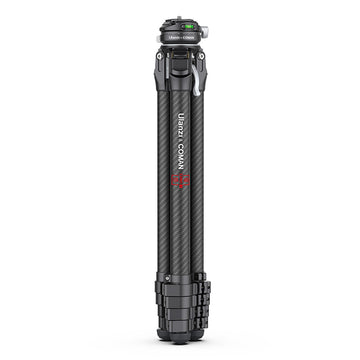When it comes to photography and videography, having a reliable tripod is essential for capturing steady and high-quality shots. However, with the wide variety of cameras available in the market, it can be challenging to find a tripod that is compatible with all of them. In this ultimate guide, we will explore the factors to consider when choosing a tripod that offers universal compatibility with all cameras.

Understanding Tripod Compatibility
Before delving into the specifics of tripod compatibility, it's important to understand what it means for a tripod to be universally compatible with all cameras. A tripod that is universally compatible should be able to support the weight and size of various cameras, from compact point-and-shoots to professional DSLRs and mirrorless cameras. Additionally, it should be equipped with a standard mounting plate that can easily attach to the majority of camera models.
Factors to Consider
When selecting a tripod with universal compatibility, there are several key factors to take into account. The first consideration is the weight capacity of the tripod. Different cameras have varying weights, so it's crucial to choose a tripod that can support the heaviest camera you plan to use. Additionally, the tripod's head and mounting plate should be compatible with the standard screw size found on most cameras, typically 1/4-20 or 3/8-16.
Furthermore, the tripod's height and leg adjustments play a significant role in its compatibility with different cameras. A versatile tripod should offer adjustable leg angles and heights to accommodate various shooting scenarios and camera positions. Additionally, the type of tripod head, such as ball heads or pan-tilt heads, can impact its compatibility with different cameras and shooting styles.
Universal Compatibility in Action
Let's consider a scenario where a photographer owns both a compact point-and-shoot camera and a professional DSLR. To ensure universal compatibility, they would need a tripod that can securely hold both cameras. In this case, a tripod with a weight capacity ranging from the lightest to the heaviest camera, along with a standard mounting plate, would be the ideal choice. Additionally, adjustable leg angles and a versatile tripod head would allow the photographer to capture a wide range of shots with ease.
Future-Proofing Your Gear
As technology continues to evolve, new camera models with different sizes and features are constantly being introduced. When investing in a tripod, it's essential to future-proof your gear by choosing one that can adapt to the changing landscape of camera technology. By prioritizing universal compatibility, photographers and videographers can ensure that their tripod remains a valuable tool regardless of the camera they use in the future.
In conclusion, selecting a tripod with universal compatibility with all cameras is a crucial decision for photographers and videographers. By considering factors such as weight capacity, mounting plate compatibility, leg adjustments, and tripod head type, individuals can choose a versatile tripod that meets their current and future needs. With the right tripod, capturing stunning and stable shots with any camera becomes a seamless and enjoyable experience.














